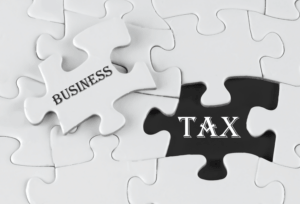Of course, if you freelance, you don’t need to worry about running payroll either now or in the future. But for small-business owners who want to eventually expand their businesses and hire an employee or two (or more), just know that Wave doesn’t make it easy to add payroll software beyond its own. FreshBooks came to life as an invoice- and billing-specific software program that expanded into a total accounting solution.
Does Wave Accounting track inventory?
- For instance, it doesn’t offer the same built-in time-tracking and project-tracking features you get with most other basic accounting software plans.
- Wave’s business reports are on par with some of the top invoicing solutions companies for small businesses.
- Since you don’t have to pay anything to get started, it’s certainly worth trying out.
- Wave Accounting offers free software, meaning you won’t need to submit a credit card or payment information to use it.
Unlike QuickBooks and FreshBooks, Wave Accounting is completely free to use. It can allow you to manage all your accounting processes without paying a dime. It’s also intuitive so you don’t need to be an accountant to use it successfully. While Wave has a lot to offer when it comes to invoicing, know that it’s still slightly less automated than some competitors. This isn’t necessarily a deal-breaker, but it might require a bit more bookkeeping work. When you reconcile your books, you’ll navigate to the “Reconciliation” tab within the Accounting menu.
Order Management
While Wave Payroll doesn’t have many unique perks that set it apart from the competition, it’s a good option for business owners who are already familiar with Wave Accounting’s interface. Wave’s invoices are easy to customize with your business’s logo, colors and contact information. Overall, we rate Wave 3.9/5 and recommend it for business owners looking for a cheap — or in most cases, free — accounting software option. Check out our comparisons among these top three accounting software options to find the right fit for your business.
Is invoicing software secure?
Zoho Books offers a robust free plan, along with a range of paid plans that feature workflow automation. FreshBooks is an affordable option for freelancers and small service-based businesses that operate mostly on the go. Includes tools that help automate the reconciliation process and auto-categorizes transactions for you in the Pro plan, but you can’t set up your own bank rules; no global obtaining an employer identification number for an exempt organization search function.
That’s not the case with Wave—it provides one plan with an unlimited number of users, invoices, credit card connections and reports for free. While users never pay a monthly fee, they will have to pay a credit card processing fee of 2.9% plus 30 cents per transaction if they use Wave to process credit card payments. While Wave is free to use, it doesn’t offer multiple plans to increase its functionality.
The interface ensures a low learning curve with friendly graphics, an in-app help center, live chat, user-first design and an accessible app. Wave doesn’t offer any native integrations with third-party apps, though users can rely on Zapier to create their own custom integrations. In fact, the only app Wave Accounting does sync with is Wave Payroll. Another good tax feature is the ability to track present value of an annuity definition payments and generate 1099’s for your independent contractors. This feature requires either the Pro plan or a subscription to Wave Payroll. Explore more details on the competition in our full roundup of the best accounting software for small businesses.
Wave’s free plan offers a decent number of features, like unlimited invoices, that are not always included with other free accounting software options, let alone paid accounting software plans. It also complies with accounting standards and uses double-entry accounting, which can help ensure accuracy. Wave is designed specifically for small business owners to use, no matter what kind of bookkeeping background they come from. The software supports multiple companies and offers personal accounting as well. Wave improved its software and has addressed many customer complaints in its latest redesign, including adding 1099 payroll support, duplicate transaction management, and cash-basis accounting. The checkout feature is one-of-a-kind and a great addition for business owners who need to charge multiple customers quickly.
If you have a question or issue, you can browse the help cash book excel center or reach out to Mave, the automated chatbot. If you do want live support, you’ll need to invest in an Advisor or paid service. Although accounting and invoicing are separated into two different product sections on the Wave website (shown similarly below), they don’t require separate accounts. These solutions are integrated within your dashboard and you’ll access them both through your single Wave login. Our partners cannot pay us to guarantee favorable reviews of their products or services. We believe everyone should be able to make financial decisions with confidence.







